Letters from Lodi
An insightful and objective look at viticulture and winemaking from the Lodi
Appellation and the growers and vintners behind these crafts. Told from the
perspective of multi-award winning wine journalist, Randy Caparoso.
Story of an appellation—Part 2, origin of Lodi as a city and agricultural region
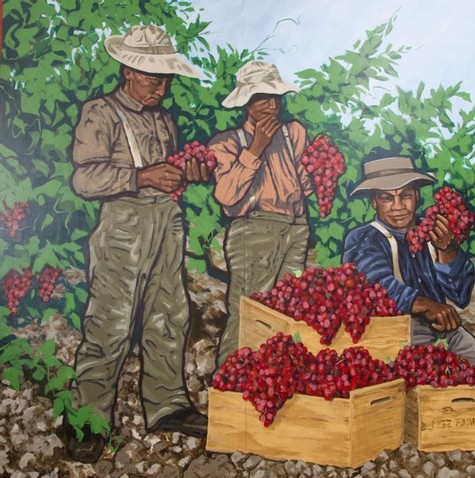
Chinese pickers with Mokelumne River-Lodi Flame Tokay around the turn of the last century. San Joaquin County Historical Museum.
Continued from Story of an appellation—Part 1, the first stewards of the land that would become Lodi
The nineteenth-century settlement near the banks of the Mokelumne River couched between the California Delta and foothills of Sierra Nevada, would not become known as Lodi until 1874. It was originally called Mokelumne and officially established as a town in 1869 after a group of major landowners persuaded the Central Pacific Railroad to make it a stop between the inland port cities of Stockton and Sacramento.
Steps from the railway station, the site of the town's first buildings at the corner of present-day Sacramento and Pine Streets—where the landmark Lodi Arch would later be erected to commemorate the 1907 Tokay Carnival—was chosen because it sits on slightly higher ground, less prone to the Mokelumne River's frequent flooding.
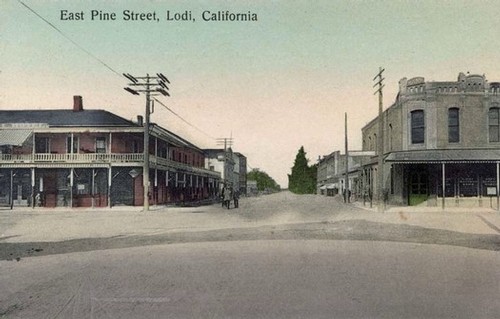
1887 postcard with the original Lodi Hotel at the corner of Pine and Sacramento Streets from where the Lodi Arch would be built in 1907.
The town of Mokelumne, however, was easily confused with the nearby communities of Mokelumne Hill and Mokelumne City, According to Ralph A. Clark's Lodi—Images of America, the plethora of Mokelumnes often delayed mail and hampered shipments of goods and supplies. This problem was what forced the eventual change in name to Lodi, in 1874.
Why "Lodi?" There are, strangely, multiple accounts, the real one now lost in time. One opinion cites a well-known trotting horse named Lodi, bred in Woodland, California, and raced in Sacramento. Another says settlers from Lodi, Illinois successfully rallied for the name. Other sources say the name is most likely a tribute to Lodi in Lombardy, Italy, where Napoleon was once stopped in 1796. Lodi in Italian means beautiful, which may have been plenty enough reason. Whatever the case, Mokelumne became Lodi.
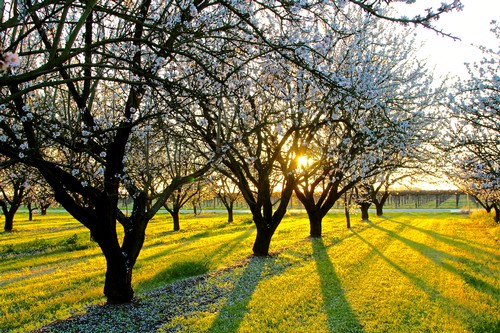
Almond orchards and vineyards during spring bloom on the west side of Lodi's Mokelumne River appellation.
Lodi was incorporated as a city in 1906, by which time agriculture was firmly established as the surrounding region's main industry, which still holds true today. Vineyards currently account for most of San Joaquin County's agriculture acreage with about 69,000 acres, and another 31,000 acres of the Lodi AVA's vineyards fall in Sacramento County. Almonds gross more dollars on about 56,000 acres of plantings.
According to the most recent San Joaquin County Crop Report (2021), the region's highest-grossing agricultural crop is almonds (nearly $454 million). This is followed closely by milk (over $445 million) and then grapes (over $428 million), walnuts (nearly $368 million) and cherries (nearly $320 million). Although these figures fluctuate from year to year (at one point, grape sales were the highest), these have been pretty much the leading agricultural products over the past ten years.
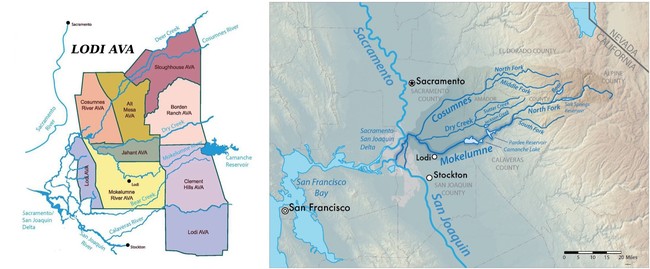
The sub-appellations of the Lodi AVA shown in proximity to the Mokelumne River watershed between the California Delta and foothills of Sierra Nevada.
Land conducive to agriculture
By the time the 85,700-acre sub-AVA of Mokelumne River was officially recognized in 2006, the agricultural land surrounding Lodi had been known for well over a century for its deep, rich, fine, talcum powder-like alluvial soil, consistent to depths of as much as 90 feet. The official classification of this soil is Tokay sandy loam, named for the variety of Vitis vinifera (Flame Tokay) that dominated the region for over 100 years. This ultra-rich valley soil is complemented by the same dry Mediterranean climate warm seasonal temperatures and diurnal shifts that typify most of the California coast between Santa Barbara and Sonoma.
However, most American AVAs are not defined by nearly as much consistency of topography (10- to 85-foot elevation flats, with less than 2% slopes) and single soil type as the Mokelumne River sub-appellation surrounding the City of Lodi. Whereas most American wine regions consist of a multiplicity of soils, slopes, and elevations, in the Mokelumne River AVA there are no steep mountains or significant hills, and no rocks or even gravel.
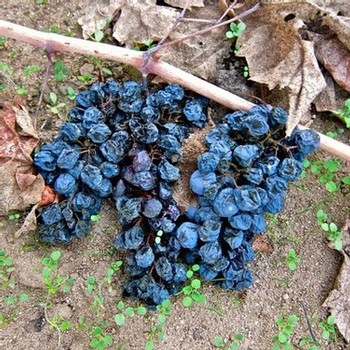
Shriveled Zinfandel dropped on the rich, fine-grained Tokay sandy loam soil—devoid of rocks or gravel down to depths of 90 ft.—defining Lodi's Mokelumne River AVA.
This AVA is home to a well-drained mix of decomposed granite—derived from the base rock of the Sierra Nevada, eroded away by constant river action—and sediment washed down from the mountains when the San Joaquin Valley was still an inland sea, beginning some 20 million years ago. The upper levels of this alluvium—the soil that delineates the boundaries of the Mokelumne River appellation today—are the result of layering over the past 15,000 to 25,000 years.
Hence, when the mid-nineteenth century settlers arrived, they found a lush valley of grasslands and valley oaks, with herds of elk and antelope, grizzly bears still roaming free, and major tributaries of the Cosumnes River to the north of the Mokelumne River and Calaveras River to the south, teeming with salmon, other fish, and waterfowl.
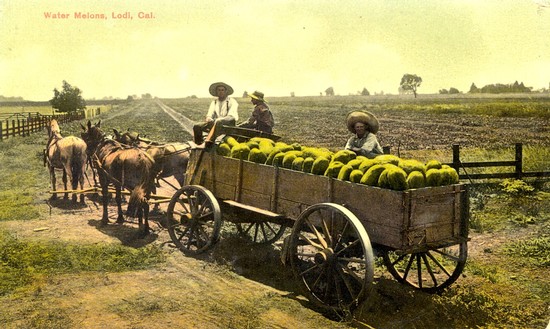
Late 1800s vintage postcard of Lodi farm when the region was known as the "Watermelon Capital of the Country."
The first settlers in the 1850s focused primarily on wheat and barley. By 1852, just two years after statehood and four years after the discovery of gold, there were already over 4,000 acres of wheat planted in San Joaquin County, encompassing the cities of Stockton, Lodi, Manteca, Tracy, French Camp, Lathrop, Ripon, and Escalon. Wheat farming reached a peak in 1880 when it grew to the fifth largest in the world—over 3 million bushels, or enough to fill 1,024 freight cars. Between 1880 and 1900 alfalfa and watermelon replaced wheat as the county's largest crops; and by the late 1880s, San Joaquin County also held the unofficial title of "Watermelon Capital of the Country."
Transition to grape growing
According to Clark, grapes were also part of the original landscape, albeit native varieties, "growing wild dangling from the trees along the riverbanks." The nearby Calaveras River (a Spanish name, meaning "skulls," given by explorer Gabriel Moraga in 1806) was originally called “Wine Creek” by early 1800s trappers, due to the abundance of wild vines; something you can still see today, growing among the tall trees and shrubs along the banks of rivers.
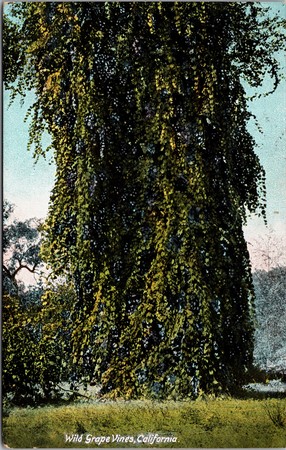
1908 postcard depicting "wild grapevines" growing on trees along the river in the Mokelumne River-Lodi appellation.
By the time the market for watermelons began to drop during the 1890s, farmers in the Mokelumne River area were already transitioning to grapes. Mission, the sole variety of Vitis vinifera originally introduced to California by the Franciscan missionaries, was an original object of interest, starting in the late 1840s and 1850s. In 1848 a Swiss immigrant named Magley is said to have planted the first vineyard in the present-day area of Mokelumne River-Lodi when most of the land was still dominated by grassland, marshes, and gigantic valley oaks.
Mission, however, was never known to produce the most distinctive table wine. In 1852, the groundbreaking event was when a Massachusetts entrepreneur named George West established El Pinal Nursery in Stockton and began yearly shipments of plant material from Boston nurseries. West started with 40 different grapes that year; selections included Zinfandel (listed by various names such as Zinfendel, Zinfindal and Black St. Peter's), Black Prince (a table as well as wine variety now identified as Rose of Peru), Sultana (later known as Thompson Seedless) as well as a wine cultivar dubbed West's White Prolific (a.k.a., Colombard or French Colombard).
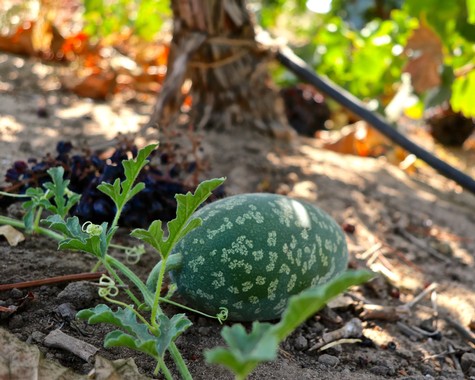
In a recent photo, wild watermelon—vestiges of 1800s farming—still growing between Carignan vines in Mokelumne River-Lodi's Nicolini Ranch.
West and his brother William planted their own vineyard at the site of their plant nursery. In 1858 the Wests established El Pinal Winery at the north/eastern edge of Stockton and began contracting growers in the Lodi area—during the 1850s and 1860s, still known as Mokelumne—to plant grapes to augment their production of table wines (one El Pinal specialty was a generic Claret, produced from unnamed Bordeaux varieties), fortified dessert wines (such as Port, Sherry and Madeira) as well as brandy sold under the El Pinal label.
We do not have detailed records of all the early plantings in the Mokelumne area surrounding the present-day City of Lodi. It is known that in 1857 Ezekial Lawrence, one of Lodi's founding fathers, arrived and made note of the fact that there were still less than 10 acres of vineyards in the area. It is known that in 1861 George Perley planted a reported 30 different cultivars in partnership with the Wests. During the 1860s A.T. Ayers planted Mission, and in 1864 George Leffler planted 2 acres of Black Prince and a dozen other wine grapes in the vicinity of today's Eight Mile Road, connecting Stockton with present-day Lodi.
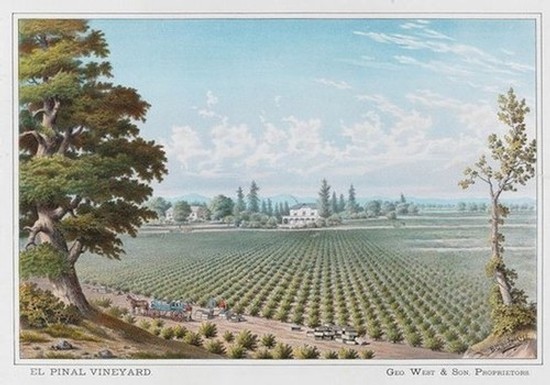
Early 1900s postcard depicting El Pinal Vineyard at the north edge of Stockton, at a time when El Pinal Winery was re-incorporated as George West & Son Winery.
Leffler also planted 6 acres of Flame Tokay (a.k.a., Tokay), a vividly pink-skinned Vitis vinifera also known as Ahmeur Bou, which probably originated in Algeria. The earliest plantings of Flame Tokay on record go back to 1857, on a farm owned by James Rutter in the Florin area near Sacramento. Rutter cultivated Flame Tokay as a table grape, successfully sold to fresh markets in the Bay Area. By the 1860s, writes Reller and Lea in Lodi Historian, "It was the "plump-berried Tokay and Black Prince varieties that did the best" for Mokelumne growers, "and these eating grapes were successfully sent to the San Francisco market by boat.”
Flame Tokay proved to be so readily adaptable to Mokelumne's Delta breeze-influenced Mediterranean climate and deep, fine sandy loam alluvium that by the 1890s the variety became the most widely planted grape in the area. In fact, it is probably hard for anyone below the age of 30 today to imagine that Tokay, which you can no longer find in markets, was once planted in every nook and cranny of Lodi. It wasn't until the 1980s that Flame Tokay was totally displaced by newer seedless varieties in fresh markets, and Lodi growers pulled out their Flame Tokay in favor of modern-day high-demand wine varieties such as Cabernet Sauvignon, Chardonnay, Merlot, Syrah, and Sauvignon blanc.
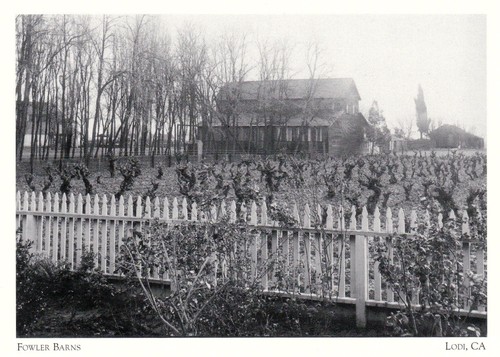
1907 photograph showing good-sized Flame Tokay vines, already at an advanced age, in the area of Lodi now demarcated as the Mokelumne River AVA.
One of the first large-scale forays into viticulture in Lodi was undertaken in 1888 by Allen T. Covell. According to Reller and Lea, “Covell purchased 160 acres north of Turner [Road] and west of Lower Sacramento [Road] for $125 per acre. He started planting grapes and in 1890 set out a large block of Tokay grapes, the first commercial planting.”
In her book Jessie's Grove, Wanda Woock described the square-mile block just west of the present-day City of Lodi that her great-grandfather Joseph Spenker purchased in 1869: "The land had hundreds of oak trees, and although it would work to clear some of them for planting, with the trees growing so abundantly he knew the quality of the soil would be excellent." Spenker originally concentrated on wheat, and then watermelons, but grew "excited," according to Woock, about the possibility of growing grapes, "all the different varieties he could grow," and "the fact they were to stay in the ground for many, many years to come" as opposed to being a crop that needed to be replanted each year.
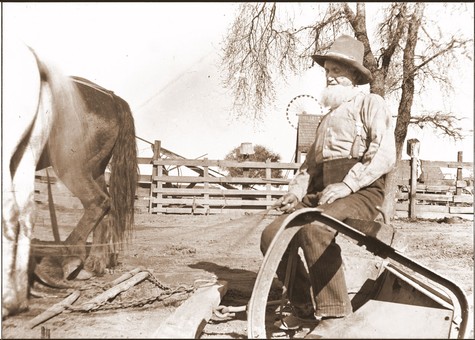
Late 1800s photograph of Joseph Spenker, whose descendants still own and farm Spenker Ranch, now called Jessie's Grove.
After consulting with the Wests at El Pinal Nursery, Joseph Spenker planted his first 25 acres of grapevines in 1886. The Wests advised Spenker to plant a grape listed as "Black Malvoisier" [sic], which was sold as Black Malvoisie until 2004 when it was finally identified by U.C. Davis as Cinsaut, a higher-demand Southern French grape. During much of the following century, the Spenker family's Cinsaut grapes were fresh-packed and shipped to home winemakers in Canada or across the U.S. These vines are still productive today and now go strictly to specialty winemakers. They are most likely the oldest living Cinsaut vines in the world.
After planting his first 25 acres, Spenker made repeated trips to El Pinal Nursery. According to Woock, "West told him the popular grapes now were Madeline, Black Hamburg, Sweetwater, Black Ferra, and Emperor." In 1889 Spenker planted a mixed block of mostly Zinfandel (about 85%) with smaller proportions of Carignan, Flame Tokay, Mission, and Black Prince. A 5-acre remnant of this planting, now called Royal Tee Vineyard, is picked as a field mix and currently bottled by Jessie's Grove Winery, Marchelle Wines, and Monte Rio Cellars as vineyard-designate Zinfandels.
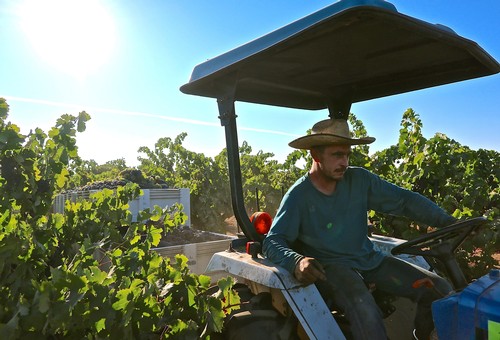
Recent harvest of Spenker Ranch Carignan—now going to some of California's most prestigious wineries—originally planted in 1900.
In 1890 Spenker increased his plantings with 7 acres of Black Prince and 22 acres of Flame Tokay. Less than an acre of the Flame Tokay remains in the ground today, and the Black Prince is long gone. In 1900 Spenker added another 16 acres of Zinfandel, 5 acres of Carignan, and 8 acres of Mission. Of the 1900 plantings, only the Carignan block survives—going to wineries such as Sandlands, Precedent Wine, Marchelle Wines, Neyers Vineyards, and Jessie's Grove Winery—and is identified as either Jessie's Grove or Spenker Ranch.
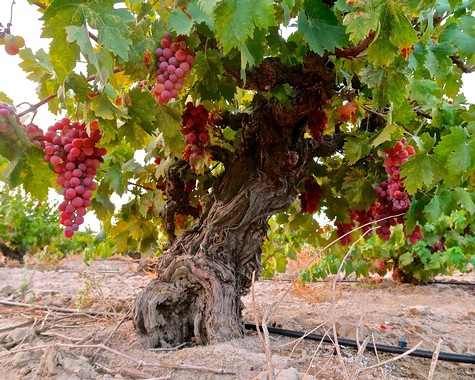
Ancient vine Flame Tokay in Lodi's Old School Vineyard, planted in 1906, the year the City of Lodi became incorporated.
Flame Tokay was the crop that would eventually generate the wealth that made the City of Lodi possible in 1906 when the city was incorporated. In 1907, to celebrate the city's founding, Lodi citizens put on an extravagant three-day celebration, in the middle of the September harvest, called the Tokay Carnival. On June 8, 1907, the local newspaper (Lodi Sentinel) published an editorial calling the local citizens to action; announcing:
Lodi will show the world what she produces by displaying the real product before their eyes and (we'll) decorate the town with vines and grapes, making this city resemble a living vineyard as near as possible... Let us show them... Santa Barbara and Pasadena became famous on account of their flowers; oranges made Los Angeles, and fruit made San Jose famous—let grapes make Lodi famous.
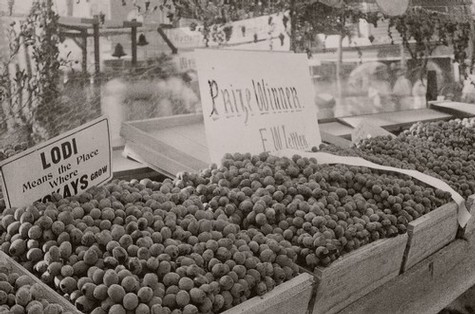
Vintage photograph of award-winning Flame Tokay on display during the historic 1907 Tokay Carnival.
You can still see some ancient Flame Tokay vines growing today in Lodi. Sometimes you’ll see a few well-tended bushes in front of old homes, putting out vividly colored fruit from majestic tree-like trunks. Or, they are visible in patches of long-abandoned roadside plantings, covered with scraggly weeds. There is a 4-acre block of well-maintained 1906 vines on Lodi's east side now registered by the Historic Vineyard Society as Old School Vineyard, all going into a brandy program started by Delta Artisan.
On the west side of Lodi is a 3-acre block of 1890 Flame Tokay originally planted by Zella Hansen, now called Chandler Vineyard (acquired by Karen Chandler in 2005). Alas, almost half of Chandler's vines, planted on 10 by 10-foot rows, were torn out in the early 2000s and interplanted with Mission olive trees by an over-zealous, since-departed partner, who was itching to get into the olive oil business. Thank goodness, the noble-looking vines that remain are now highly prized not only for their historic value but also because they go into an interesting table wine bottled as Flame Tokay.
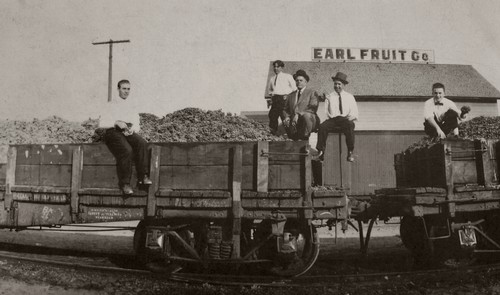
Early 1900s photograph of an open railroad car teeming with Lodi-grown grapes.
Grapes grown specifically for wine production, of course, played a key role in Lodi's agricultural history from the beginning. As it happened, phylloxera, an insidious root louse that temporarily maimed the California wine industry, especially in Napa Valley, Sonoma County, and Livermore Valley, during the 1860s and 1870s, had absolutely no effect on Lodi's steadily growing grape farming industry.
Why? As Mother Nature would have it, phylloxera does not proliferate in sandy soils, which is why, to this day, Lodi's oldest Mokelumne River plantings, dating back to the 1880s, are still happily growing on their own, ungrafted rootstocks.
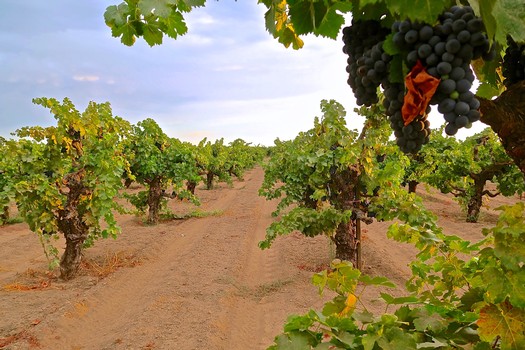
Harvest morning in Bechthold Vineyard; own-rooted Cinsaut originally planted in 1886 in the rich sandy loam soil of Lodi's Mokelumne River AVA.
High-vigor sandy loam, phylloxera-resistant own-rooted vines, and a consistent Mediterranean climate characterized by warm days and cool nights during the height of summer all add up to the natural conditions defining the Lodi winegrowing region. Particularly Lodi's plethora of old vines; today, adding up to thousands of acres planted as long as 50, 75, or even over 100 years ago.
Old vines, in an acorn shell, exist wherever there is an environment conducive to healthy plants. Vineyards are capable of becoming "old vines" only under ideal conditions, and as long as there are commercial markets supportive of that fruit. Lodi, as it is, has more acreage of old vines than any other region in California, thus the country. That in itself should tell you everything you need to know about why grapes became Lodi's leading agricultural product by the start of the twentieth century. Because Lodi can.
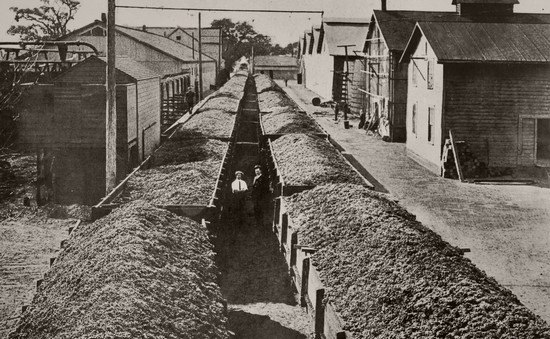
Open railroad cars teeming with grapes at Stockton's El Pinal Winery in 1895.